Okinawa
- Sort by
- Popularity
- Name
-
Tsubame-tsuiki copperware Tsubame tsuiki doki
- Metal works
- Niigata

Tsubame-tsuiki Copperware (called Tsubame Tsuiki Douki in Japanese) is a type of metalware made on the outskirts of Tsubame, Niigata prefecture. Since the middle of the Edo period (1603-1868), kettles and other crafts have been produced from coppe…
View more
-
Hachio island silk Honba kihachijo
- Woven textiles
- Tokyo

Honba Island Silk (called Honba Kihachijo in Japanese) is produced on Hachijojima Island in Tokyo. The name of this craft derives from a silk fabric with stripe and check patterns mainly dyed in bright yellow called kihachi. Patterns mainly dyed i…
View more
-
Ryukyu traditional textiles Ryukyu bingata
- Dyed textiles
- Okinawa

Ryukyu Bingata is a dyed and woven textile produced around Shuri, Okinawa prefecture. Its origin goes back to the 14th to 15th century. The ladies of the royal family or the families of the warrior class wore Ryukyu Bingata. There are two kinds of…
View more
-
Woodblock prints Edo mokuhanga
- Other crafts
- Tokyo

Techniques for woodblock prints were developed and refined during the Edo period (1603-1868), and Edo Woodblock Prints called Edo Mokuhanga in Japanese, contributed to spreading beautiful printed art forms such as ukiyoe (a genre of Japanese art).…
View more
-
Akita cedar tubs and barrels Akita sugi oke taru
- Wood, bamboo crafts
- Akita
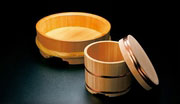
Akita-sugi Oke Taru are handmade Akita cedar tubs and barrels produced from locally grown cedar timber in the cities of Odate and Noshiro of Akita Prefecture since around the late Heian period (11th century). Products made of straight grain wood w…
View more
-
Echigo-sanjo cutlery Echigo sanjo uchihamono
- Metal works
- Niigata
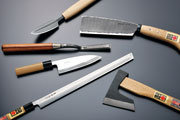
Echigo-Sanjo Uchihamono are hammer-forged blades produced in Sanjo City, Niigata prefecture. Unlike modern blades made using the stamp pressing and polishing techniques developed after the second world war, these blades are produced by hand-hammer…
View more
-
Kijoka banana fiber cloth Kijoka no bashofu
- Woven textiles
- Okinawa

Kijoka no Bashofu are a woven cloth produced in Kijoka, Ogimi Village in northern Okinawa. Bashofu is made from the fibers of the Japanese banana plant called Basho, and has been used to make kimonos in Okinawa since ancient times. Kijoka no Basho…
View more
-
Suruga-hina doll Suruga hina ningyo
- Dolls, kokeshi
- Shizuoka
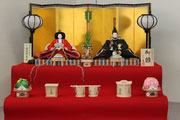
Suruga Hina Dolls are dolls made in and around Shizuoka City in Shizuoka. Suruga Hina Dolls are larger than other dolls as thick rice straw is used to form the body which is the center of the doll. It is said that rice straw was used because Shizu…
View more
-
Tokamachi traditional resist-dyed textiles Tokamachi gasuri
- Woven textiles
- Niigata
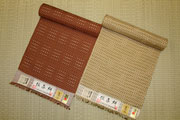
Tokamachi Gasuri is a fabric produced in Tokamachi City and around Tsunanmachi in Nakauonuma, Niigata Prefecture. This area has heavy snow in the winter and is in a basin, so the climate and geographical features are all suitable for fabric produc…
View more
-
Tokyo textiles Tokyo tegaki yuzen
- Dyed textiles
- Tokyo

Tokyo Tegaki Yuzen are kimono textiles produced in Shinjuku Ward, Nerima Ward and Nakano Ward, Tokyo. Having been produced in the townsmen culture of Edo (current Tokyo), a refined stylishness is expressed in its soft, subdued colors. Unlike other…
View more
-
Nagaoka Buddhist altar Nagaoka butsudan
- Household Buddhist altars
- Niigata
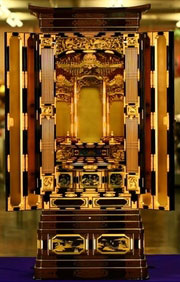
Nagaoka Butsudan are Buddhist altars and altar fittings produced in and around Nagaoka City, Niigata Prefecture. Using traditional techniques that were developed in the 17th century, they are also actively producing innovative designs that suit a …
View more
-
Tokamachi akashi chijimi textiles Tokamachi akashi chijimi
- Woven textiles
- Niigata
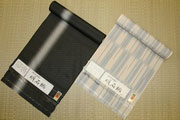
Tokamachi Akashi Chijimi is a textile produced in the area surrounding Tokamachi City in Niigata Prefecture. This is a very delicate and thin textile that requires the high-level techniques and precision of experienced craftsmen. An experimental t…
View more
-
Yonaguni brocade Yonaguni ori
- Woven textiles
- Okinawa
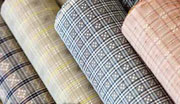
Yonaguni Brocade, called Yonaguni Ori in Japanese, is a textile produced in Yonaguni-cho, Yaeyama Gun, Okinawa Prefecture. The characteristic of Yonaguni Ori is the simple beauty of the textile that is dyed and woven by hand in the distinctive cli…
View more
-
Echigo-yoita cutlery Echigo yoita uchihamono
- Metal works
- Niigata
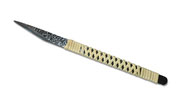
Echigo Yoita Uchihamono are blades produced for a variety of tools in the Yoita area of Nagaoka City, Niigata Prefecture. They are smith forged, meaning red-hot metal is beaten to shape, and are distinguished by their refined sharp cutting edge an…
View more
-
Edo-sekku doll Edo sekku ningyo
- Dolls, kokeshi
- Tokyo
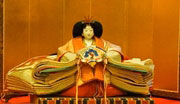
Edo Sekku Ningyo are dolls produced in 12 of the wards in Tokyo and four cities in Saitama Prefecture. They are costumed dolls, such as ichimatsu ningyo (play dolls), gosho ningyo (palace dolls) and fuzoku ningyo (dolls in period costumes), as wel…
View more
-
Sanjo Buddhist altar Sanjo butsudan
- Household Buddhist altars
- Niigata
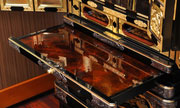
Sanjo Butsudan are Buddhist altars made in the Sanjo area, Niigata prefecture. They are golden altars with well-established characteristics of elegance and dignity. Sanjo Butsudan is characterized by the orthodox design of an inner sanctuary, qual…
View more
-
Suruga doll accessories Suruga hinagu
- Dolls, kokeshi
- Shizuoka

Suruga Hinagu (Hina Doll accessories) are a traditional craft produced mainly in Shizuoka city, Kakegawa city and Yaizu city in Shizuoka prefecture. A distinctive feature of Suruga Hinagu is that every piece of furniture, such as chests of drawers…
View more
-
Yuntanza minsa Yomitanzan minsa
- Woven textiles
- Okinawa

Yuntanza Minsa is a textile produced in the region around Yomitanson, Nakagami-gun, Okinawa prefecture. Min means "cotton" and sa means "narrow belt". Narrow belts were made in various regions in Okinawa from ancient times. Bas…
View more
-
Edo Hyogu (Art Mountings) Edo Hyogu
- Other crafts
- Tokyo

Hyougu (art mountings) are used to set up calligraphic works and paintings into hanging scrolls, picture frames, and folding screens etc. for display and preservation. There are various types of art mountings such as hanging scrolls and scrolls, f…
View more
-
Edo Oshi-e Pictures on Embossed Fabric Edo oshie
- Dolls, kokeshi
- Tokyo

Edo Oshi-e, or Edo Oshi-e Embossed Fabric Pictures, are a traditional craft produced around Nihombashi and Asakusa, Tokyo from the late Edo period (1603 - 1867). Today, they are also produced in Sumida ward, Koto ward, Katsushika ward in Tokyo, as…
View more
-
Edo tortoise shell crafts Edo bekko
- Other crafts
- Tokyo
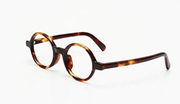
Edo Bekko are fashion accessories and ornaments made from hawksbill turtle shells, produced in Bunkyo Ward, Taito Ward and Sumida Ward, Tokyo. Production of this craft started in the early Edo period. Edo Bekko is characterized by its unique sheen…
View more
-
Flower pattern textiles Haebaru hanaori
- Woven textiles
- Okinawa

Haebaru flower patterned textiles called Haebaru Hanaori in Japanese, are made in the city of Haebaru in the Okinawa Prefecture. Plants harvested in the prefecture such as garcinia or Assam indigo are used to dye the yarns. Haebaru Hanaori can be …
View more
-
Niigata-shirone Buddhist altar Niigata shirone butsudan
- Household Buddhist altars
- Niigata
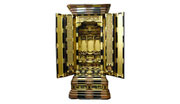
Niigata Shirone Butsudan are Buddhist altars which are mainly made in Niigata city, Niigata prefecture. Japanese cypress, zelkova, Japanese cherry, Japanese white pine and pine are usually used for the altar base. Niigata Shirone Butsudan is chara…
View more
-
Sado Mumyoi Ware Sado mumyoi yaki
- Ceramic
- Niigata

Mumyoi Ware is a pottery that has been passed down for generations in Sado, Niigata. Mumyoi is made of the minerals containing iron oxide found in the quartzites of the Sado Gold Mine. It is said to have been used as medicine for hemostasis and pa…
View more
-
Sanshin Sanshin
- Other crafts
- Okinawa

Sanshin is a musical instrument produced around Naha of Okinawa prefecture. It is used for Kumiodori, which is a theatrical art listed on the UNESCO's Representative List of the Intangible Cultural Heritage of Humanity, Ryukyu opera, Okinawa&…
View more
-
Tokyo Honzome Chusen Tokyo Honzome Chusen
- Dyed textiles
- Tokyo

Chusen is a dyeing technique to pour dye onto the fabric. By pouring dye onto layers of fabric from the top and bottom, both sides of the fabric are dyed beautifully so that there is no difference between the back side and front side. Fabrics dyed…
View more
-
Tokyo Koto (Japanese Harp) Tokyo Koto
- Other crafts
- Tokyo
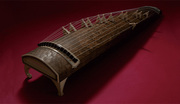
The koto was introduced from China as an instrument for court music. Then around the 16th century, the Tsukushi Goto was made in Japan which became the base of the Japanese koto today. The koto was known familiarly as part of the Kyoto culture, b…
View more
-
Tokyo Plain Dyeing Tokyo mujizome
- Dyed textiles
- Tokyo
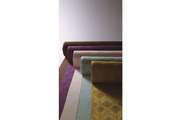
Tokyo Plain Dyeing, called Tokyo Mujizome in Japanese, is a plain dyed textile that started in the mid-Edo period by dyeing artisans as plain dyeing of Edo Murasaki(Edo Purple), indigo, safflower and Edo Cha(Edo Brown). The current main productio…
View more
-
Tokyo Shamisen Tokyo Shamisen
- Other crafts
- Tokyo

The Tokyo Shamisen is made from the beginning to the end by one artisan. In the Kansai area, the work is divided among a number of artisans, but the Tokyo Shamisen is custom made for the musician by one artisan. It is a craft made by the artisan a…
View more
-
Tokyo antimony craft Tokyo antimony kogeihin
- Metal works
- Tokyo

Tokyo Antimony Craft is metalwork produced in the area from the northeast of Tokyo through to Abiko City in Chiba prefecture. Antimony is an alloy, which easily takes impressions, has a smooth surface and does not shrink during cooling after casti…
View more

































































































































































































































































































